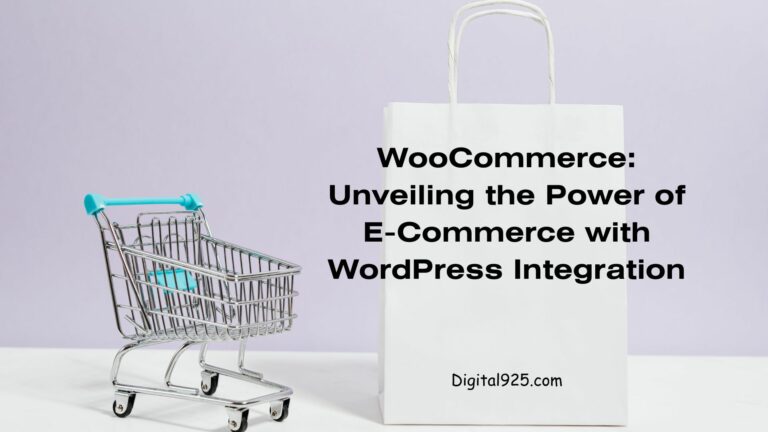Make Money With Digital Products: Blogger Edition
If you’re a blogger, you’re already in the business of sharing knowledge and have a platform that could be perfect to make money with digital products. I will paint a picture of the digital product scene as it stands for bloggers like you.
The surge in digital content consumption isn’t slowing down. People are always looking for insightful, easy-to-access info, and that’s where digital products like ebooks, online courses, templates, and toolkits enter the picture.
Not only do they offer immense value to your readers, but they’re also an incredibly scalable way for you to generate income.
Why incorporate digital products?
For starters, they’re cost-effective with low overhead, often have high-profit margins, and can be sold repeatedly, around the clock, without needing to restock.
This isn’t just about financial gain; it’s about leveraging your expertise and adding another dimension to your blogging career.
Look at bloggers who’ve jumped—folks who started with words and ideas and packaged that knowledge into something more tangible.
Their stories can be brilliant sources of inspiration, showcasing the potential digital products hold (provided, of course, that you’re willing to put in the work).
Developing your strategy takes planning and clearly understanding what your audience craves. But once you’ve got that down, you’ll learn about identifying your niche, selecting products that align with your blog’s brand, and marketing those products effectively.
Introduction to Digital Products
The rise of the digital economy has opened up numerous opportunities for entrepreneurs to create and sell digital products.
Digital products, unlike physical goods, can be distributed electronically, making them a highly scalable source of income.
This guide will examine the most effective strategies for creating, marketing, and making money with digital products.
Understanding Digital Products
Digital products are intangible goods that can be created once and sold repeatedly online.
Examples include e-books, online courses, software, music, videos, and templates. After their initial creation, digital products require minimal ongoing effort, making them ideal for generating passive income.
Developing Your Digital Product Strategy
Starting with a strategic plan is crucial to break into the digital product market as a blogger.
Crafting a digital product strategy involves much more than just choosing a product and putting it out there. You’ll learn the importance of aligning your offerings to your niche and audience needs and how your unique expertise can translate into valuable products.
The intersection of passion and expertise is at the core of any successful digital product. Choose something that resonates with you and utilizes your unique skill set.
This isn’t just about following a trend; it’s also about creating products you’re proud of that your readers will find helpful.
Creating ebooks, online courses, or customizable templates is an excellent way to deliver your knowledge and experience to your audience in a tangible form.
You can constantly adjust your approach, but you should know your promotion and marketing strategies before you launch your product.
Getting the word out there isn’t just about social media blasts and hoping for the best; it involves engaging with your audience, sharing valuable snippets, and perhaps even offering a free preview or mini-course to entice potential customers.
Finally, social proof and community building can amplify your product’s credibility and appeal. Encourage reviews, create dedicated discussion spaces, and showcase how others use your product.
When people trust your product and see others benefiting from it, they’re more likely to become customers themselves.
Benefits of Selling Digital Products
Selling digital products offers several advantages:
- Scalability: Digital products can be sold to unlimited customers without additional production costs.
- High-Profit Margins: With no physical inventory or shipping costs, digital products often have higher profit margins.
- Global Reach: The internet enables you to reach an international audience, significantly expanding your potential customer base.
- Automation: Sales processes can be automated, allowing you to earn income with minimal ongoing effort.
Types of Digital Products to Sell
E-Books
E-books are a popular choice for digital products. They can be written on virtually any topic and sold through platforms like Amazon Kindle and Apple Books or directly from your website.
Online Courses
Online courses are in high demand, particularly in professional development, hobbies, and technical skills. Platforms like Udemy, Teachable, and Coursera make creating and selling courses easy.
Software and Apps
Developing software or mobile apps can be a lucrative venture. These products can be sold on platforms like the App Store, Google Play, or your website.
Digital Art and Design
Digital art can be sold on marketplaces like Etsy, Creative Market, and Adobe Stock, including graphic designs, templates, and fonts.
Music and Audio Files
Musicians and audio engineers can sell music tracks, sound effects, and audio loops on platforms like AudioJungle, Bandcamp, and iTunes.
Membership Sites and Subscription Services
Creating a membership site or subscription service provides recurring income. This model is famous for exclusive content, premium features, or ongoing education.
Steps to Create and Sell Digital Products
1. Identify Your Niche and Audience
Understanding your target audience is crucial.
Conduct market research to identify niches with high demand and low competition. Use tools like Google Trends, keyword research, and competitor analysis to refine your focus.
2. Develop High-Quality Content
Quality is critical to the success of digital products.
Invest time in creating valuable and engaging content. Ensure your product solves a problem or meets a need for your audience.
3. Choose the Right Platform
Selecting the right platform to sell your digital products is essential.
Consider factors such as ease of use, audience reach, pricing, and features. Popular platforms include:
- Amazon Kindle Direct Publishing for e-books.
- Udemy and Teachable for online courses.
- Shopify and WooCommerce for selling directly from your website.
- App Store and Google Play for mobile apps.
4. Set Up a Professional Website
A professional website enhances your credibility and provides a central hub for your digital products.
Ensure your website is user-friendly, mobile-responsive, and optimized for search engines (SEO). Include a blog to attract organic traffic and establish your authority in your niche.
5. Implement Effective Marketing Strategies
Marketing is crucial to the success of your digital products. Use a mix of strategies to reach your audience:
- Content Marketing: Create valuable content that attracts and engages your target audience. Use blogs, videos, and social media to drive traffic to your website.
- Email Marketing: Build an email list and send regular newsletters with updates, promotions, and valuable content.
- Social Media Marketing: Leverage platforms like Facebook, Instagram, and LinkedIn to promote your products and engage with your audience.
- Paid Advertising: To reach a broader audience, use Google Ads, Facebook Ads, and other paid advertising options.
- Affiliate Marketing: Partner with influencers and bloggers to promote your products in exchange for a commission.
6. Optimize for SEO
Search engine optimization (SEO) is essential for driving organic traffic to your website.
Use keyword research to identify relevant terms and phrases and incorporate them into your content, product descriptions, and metadata.
Focus on on-page SEO (content optimization) and off-page SEO (backlink building).
7. Automate Sales and Delivery
Automation tools can streamline the sales and delivery process, allowing you to focus on other aspects of your business.
Use tools like Zapier to integrate various apps and automate workflows. Set up email sequences to nurture leads and convert them into customers.
8. Provide Excellent Customer Support
Exceptional customer support can differentiate you from competitors and build customer loyalty.
Offer multiple support channels like email, live chat, and social media.
Respond promptly to inquiries and provide helpful resources like FAQs and tutorials.
Maximizing Revenue and Nurturing Customer Relationships
Understanding your initial pricing model is crucial and can be a bit of a balancing act.
You want to price your digital products to reflect the value you’re providing without alienating your potential customer base. It’s often beneficial to consider tiered pricing strategies or introductory rates to entice early buyers.
Fostering customer loyalty goes beyond the initial sale. You’ll want to employ strategies that keep customers coming back.
This could involve regular updates to your digital products, creating a members’ area or forum for discussion, or exclusive deals for repeat customers.
Tracking customers’ interactions with your website and products can give you invaluable insights. Use analytics to tweak your marketing strategies, improve product offerings, and ultimately, increase sales. Pay special attention to which marketing channels are most effective and adapt accordingly.
Exceptional after-sales service can turn a one-time purchaser into a lifelong fan.
Respond promptly to queries and issues, and consider offering a money-back satisfaction guarantee. This will build trust and foster your brand’s strong, positive reputation.
Don’t hesitate to explore new territories with your digital products.
Market needs can shift, and your product offerings should be agile. Keep an eye on trending topics within your niche, and consider collaborating with other creators to expand your reach and offer fresh content.
Conclusion
Selling digital products offers an excellent opportunity to generate passive income.
By following the steps outlined in this guide, you can create high-quality products, reach a global audience, and build a sustainable income stream.
To achieve long-term success, focus on delivering value, optimizing your marketing efforts, and continuously improving your offerings.







